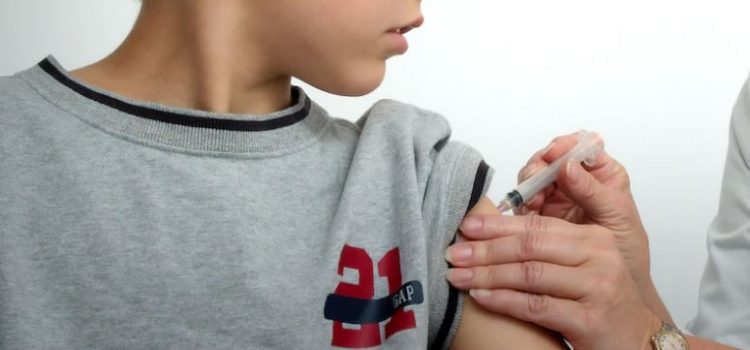
This is a free excerpt from one of Shortform’s Articles. We give you all the important information you need to know about current events and more.
Don't miss out on the whole story. Sign up for a free trial here .
What is gender-affirming hormone therapy? How does it work, and what are the side effects?
Gender-affirming care is the various treatments and procedures that allow a transgender person to physically “transition,” or to alter their bodies to ease discomfort and align with their gender identity. And one major step in the transitioning process is gender-affirming hormone therapy.
Keep reading for everything you need to know about this treatment.
Gender-Affirming Care
Before we jump into what gender-affirming hormone therapy is, keep in mind that a major component of gender-affirming care is psychological—patients receiving individual or group psychotherapy and psychiatric treatment to better understand themselves and their gender (or lack thereof). The requirements and recommendations for treatment underline how the physical and psychological components of gender-affirming care complement each other.
Gender-Affirming Hormonal Treatments
A major component of gender-affirming care is hormonal therapy. These treatments control sex hormones (estrogen and testosterone, primarily) that influence the development of secondary sex characteristics (breasts, facial hair) as well as other physical changes. Transgender or gender-nonconforming patients receive hormonal therapy to ensure that their body receives sex hormones that don’t cause them distress and that suit their gender identity.
There are two main types of gender-affirming hormone therapy for minors:
Puberty Blockers
Puberty blockers are a category of medications that delay puberty by preventing the body’s release of estrogen and testosterone. Patients generally start puberty blockers not long after the onset of puberty (usually between ages 8 and 12). Usually, a patient uses puberty blockers for a few months to a few years to avoid the effects of puberty while they undergo counseling or consider if they’ll seek further gender-affirming care. The effects of puberty blockers are almost entirely reversible—if a patient stops taking these medications, then they will undergo puberty.
Depending on when a patient starts taking puberty blockers and how long they take them, there are a number of potential side effects. This includes a few minor short-term effects (weight gain, hot flashes, and headaches, for instance) and can in some patients include long-term effects—most significant are loss of fertility and sexual function as well as reductions in bone growth and density. Doctors regularly monitor the bone growth and density of any patient on puberty blockers and can stop or switch medications if they notice an issue.
Hormone Replacement Therapy
Transgender hormone replacement therapy is a category of medications that limit and replace sex hormones. In minors, hormone therapy essentially induces a version of puberty that feels right or that eases (or removes) gender dysphoria. There are two main forms of transgender hormone replacement therapy:
1) Masculinizing: Female patients can undergo “masculinizing” hormone therapy by taking testosterone. This limits their body’s production of estrogen and “masculinizes” their body, leading to a variety of changes including (but not limited to) muscle development, increased facial and body hair growth, and a deeper voice. Common side effects of masculinizing therapy include acne, hair loss, and mood swings, while potential complications include sleep apnea, type 2 diabetes, and increased risk of heart attack and stroke. The effects of masculinizing hormone therapy are partially reversible if the patient stops hormone therapy—a deeper voice, changes in hair growth, clitoral enlargement, and (potentially) reduced fertility are the main permanent changes.
2) Feminizing: Male patients can undergo “feminizing” hormone therapy by taking anti-androgens and estrogen. Anti-androgens limit their body’s production of testosterone, while estrogen “feminizes” their body, leading to a variety of changes including (but not limited to) breast development, decreased size of testes, and less body and facial hair. Common side effects of feminizing therapy include sexual dysfunction, changes in blood pressure, and dry skin or scalp, while potential complications include blood clots, osteoporosis, and depression. The effects of feminizing hormone therapy are partially reversible if the patient stops treatment—breast growth and (potentially) reduced fertility are the main permanent changes.
Requirements for Gender-Affirming Hormonal Treatments
Requirements for gender-affirming hormone therapy can vary from country to country and even within countries. Among all of these guidelines, however, there are a few widely accepted requirements (and a few contested ones):
Widely Accepted Requirements
There are three generally agreed-upon requirements:
- Parent and patient consent: Before a care provider will offer hormonal treatments, both the minor and one of their parents must understand what these treatments will do and consent to their use.
- Gender dysphoria or gender nonconformity: To provide hormonal treatments to a minor, a doctor or mental health professional must diagnose or observe that the minor has gender dysphoria or practices gender nonconformity. Notably, this must come after the onset of puberty—some children stop experiencing gender dysphoria or nonconformity once puberty starts.
- Managing other issues: Care providers also try to ensure that a minor’s behavior or distress comes from gender dysphoria or nonconformity and not from another unrelated issue. Unrelated issues can include untreated mental illnesses (like bipolar disorder or borderline personality disorder) or unmanaged major sources of stress (like abuse or grief).
Note that care providers are usually less strict regarding puberty blockers and more strict regarding hormone replacement therapy.
Debated Requirements
There are also some controversial or debated requirements that vary among countries, states or provinces, and different care providers:
1) Social transition: Some care providers believe that minors should “socially transition” by changing how they express gender before receiving hormonal treatments. This could include changing their name, pronouns, and how they dress or present themselves to others. Proponents of this requirement suggest that patients “try out” transitioning before making decisions about medical treatment. While this used to be a more common requirement, it’s fallen out of favor more recently—opponents of this requirement argue that it can actually induce more distress for a transgender person to transition socially before undergoing any physical changes.
2) Ongoing counseling: Many care providers also require minors to consistently receive mental health counseling during any hormone treatments—including after a mental health professional has confirmed a diagnosis of gender dysphoria or a pattern of gender nonconformity.
3) Minimum age: Care providers continue to debate a minimum age for hormonal treatments. The recommended minimum age for puberty blockers usually depends on when an individual patient begins puberty—between 8 and 12. The recommended minimum age for hormone replacement therapy usually ranges from 14 to 16.
Barriers to Hormonal Treatment
Besides legal or medical requirements for hormonal treatments, patients (and minors in particular) face additional challenges or barriers to hormonal treatment. These include:
1) Parental consent: A minor can’t receive hormonal treatments if their parents don’t consent. For patients with non-accepting parents or who are still in the closet, this is a major barrier to gender-affirming care.
2) Insurance and cost: Without insurance, hormonal treatments can cost hundreds of dollars per month—too much for many patients. However, receiving hormonal treatments through insurance has its own challenges. In the United States, insurance companies can often deny coverage to patients. In addition, patients who are adults but remain on their parents’ insurance can have difficulty receiving hormonal treatments if their parents don’t accept their transition. In countries with public insurance, bureaucracy and long waiting lists often prevent patients from receiving hormonal treatments. This matters in particular for patients looking to prevent puberty, since their treatment is time sensitive.

Want to fast-track your learning? With Shortform, you’ll gain insights you won't find anywhere else .
Here's what you’ll get when you sign up for Shortform :
- Complicated ideas explained in simple and concise ways
- Smart analysis that connects what you’re reading to other key concepts
- Writing with zero fluff because we know how important your time is






